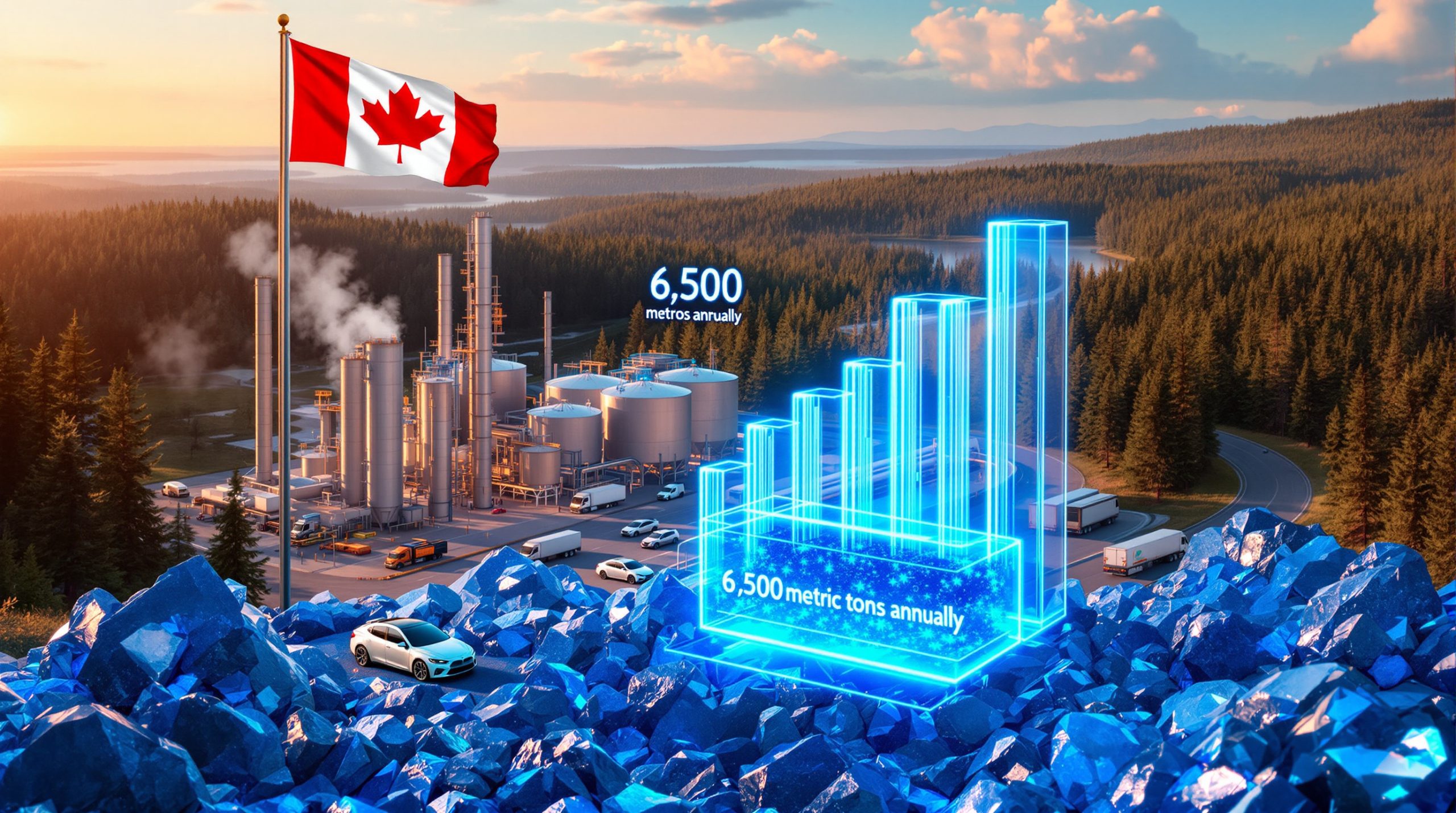What is Electrolytic Manganese Dioxide (EMD)?
Electrolytic Manganese Dioxide (EMD) is a high-purity, synthetic form of manganese dioxide produced through an electrolytic process. This specialized material features a unique crystalline structure that makes it particularly valuable for electrochemical applications. With its characteristic black-brown appearance and granular texture, EMD has become an essential component in various industrial applications, most notably in battery manufacturing.
The chemical composition of EMD typically contains 91-92% MnO2, with trace amounts of sulfur, nitrogen, and water. Its gamma-phase crystal structure gives it superior electrochemical properties compared to naturally occurring manganese dioxide. These properties include high electronic conductivity, excellent capacity retention, and stability under various operating conditions.
Technical Note: The electrolytic production method creates a material with fewer impurities and more consistent physical properties than naturally mined manganese dioxide, making EMD significantly more valuable in precision applications.
Primary Applications and End-Use Markets
The manganese dioxide market is predominantly driven by battery applications, which account for approximately 85% of global EMD consumption. Among these applications:
- Alkaline batteries: The largest consumer of EMD, using it as the primary cathode material. These batteries power everyday devices from remote controls to toys and portable electronics.
- Lithium-ion batteries: EMD serves as a precursor for lithium manganese oxide (LMO), used in certain types of lithium batteries found in power tools and some electric vehicles.
- Zinc-carbon batteries: Though older technology, these still consume significant quantities of EMD globally.
Beyond the battery sector, EMD finds application in several other industries:
- Water treatment: Used as an oxidizing agent to remove iron, manganese, and hydrogen sulfide from water.
- Agriculture: Component in certain micronutrient fertilizers.
- Electronics: Used in the production of ferrites and thermistors.
- Chemical manufacturing: Catalyst in various oxidation reactions.
Emerging applications driving market growth include advanced energy storage systems for renewable energy and specialized batteries for electric mobility. Recent advancements in supercapacitor technology have also created new demand for high-grade EMD as manufacturers seek materials that can enhance energy density while maintaining rapid charge-discharge capabilities.
What Makes the EMD Industry Highly Competitive?
The manganese dioxide market exhibits significant competitive protection through multiple barriers to entry that allow established players to maintain market share. These barriers stem from technical complexity, supply chain maturity, and business model adaptability.
Technical Barriers Creating Market Protection
EMD production requires highly specialized knowledge and significant capital investment, creating natural protection for established manufacturers. The production process involves multiple precise chemical reactions and operations, such as acidification, impurity removal, filtration, and electrolysis, which demand extremely high production technology standards.
"Producing EMD involves multiple precise chemical reactions and operations, such as acidification, impurity removal, filtration, and electrolysis, which demand extremely high production technology standards." – Shanghai Metal Market (SMM) Analysis, June 2025
These technical challenges include:
- Process precision requirements: Maintaining exact temperatures, pH levels, and current densities during electrolysis.
- Quality control complexity: Ensuring consistent product characteristics across production batches.
- Equipment specialization: Utilizing custom-designed electrolytic cells and specialized materials that resist corrosion.
- Intellectual property barriers: Proprietary formulations and processes protected by patents and trade secrets.
- Certification hurdles: Meeting rigorous industry standards such as ISO 9001, ISO 14001, and customer-specific quality certifications.
The technical complexity extends to understanding the relationship between process parameters and final product performance. A variance of just 0.1% in certain process controls can result in significantly different product characteristics, making EMD production as much an art as a science.
Supply Chain Maturity as a Competitive Advantage
A mature supply chain is one of the core factors contributing to the competitiveness of the EMD industry. Established manufacturers have developed robust networks for sourcing raw materials, particularly rhodochrosite and pyrolusite, the primary manganese ores used in EMD production.
Key supply chain advantages include:
- Strategic ore sourcing: Long-term contracts with mines in manganese-rich regions like South Africa, Australia, China, and Gabon.
- Vertical integration: Some producers own or have stakes in manganese mining operations.
- Production flexibility: Ability to adjust production lines to create different EMD specifications based on customer requirements.
- Distribution network efficiency: Optimized logistics for global distribution with regional warehousing.
- Just-in-time delivery capabilities: Meeting battery manufacturers' demand for consistent supply schedules.
These supply chain advantages create significant barriers for new market entrants, who must develop relationships with ore suppliers who often prioritize established customers with proven demand patterns.
Flexible Business Models Enhancing Market Adaptability
A flexible business model is a key strategy for the EMD industry to cope with market changes. Established manufacturers have developed approaches that allow them to adapt to fluctuations in raw material prices and evolving customer requirements.
These business model advantages include:
- Product diversification: Leading EMD producers typically manufacture multiple types of EMD (P-type, alkaline-type, lithium-type) to serve different battery segments.
- Market segmentation: Strategic focus on specific customer segments based on geographic location, application needs, or price sensitivity.
- Value-added services: Technical support, custom product development, and just-in-time delivery options.
- Hedging strategies: Financial mechanisms to mitigate raw material price volatility.
Case Study: Xiangtan Electrochemical Scientific illustrates successful business model flexibility. By developing a diverse range of new energy material products beyond basic EMD, the enterprise has enhanced its market competitiveness. Their portfolio expansion includes specialized EMD formulations for emerging battery metals investment, allowing them to maintain relevance as market demands evolve.
How Does EMD Production Technology Create Market Barriers?
Manufacturing Process Complexity
The production of Electrolytic Manganese Dioxide involves a sophisticated multi-stage process that creates significant barriers to market entry. This complex manufacturing sequence requires specialized knowledge, equipment, and quality control systems that few companies can master.
The production process typically follows these key stages:
- Raw material preparation: Manganese ore (typically rhodochrosite or pyrolusite) is crushed, ground, and prepared for chemical processing.
- Leaching and purification: The ore undergoes acidic leaching to create manganese sulfate solution, followed by multiple purification steps to remove iron, copper, nickel, and other impurities.
- Electrolytic deposition: The purified solution enters electrolytic cells where direct current causes manganese dioxide to deposit on titanium anodes.
- Harvesting and processing: The deposited EMD is removed from the anodes, washed, dried, and milled to specific particle sizes.
- Quality testing: Rigorous testing of chemical composition, particle size distribution, discharge capacity, and other parameters.
This process requires:
- Specialized equipment: Custom-designed electrolytic cells with titanium anodes and lead-based cathodes that can cost millions of dollars to install.
- Precise control systems: Automated monitoring of temperature, current density, electrolyte composition, and pH levels.
- Energy management: High electricity consumption requiring efficient power management systems.
- Environmental controls: Sophisticated waste treatment systems to handle acidic waste streams and recover valuable materials.
Industry Insight: A modern EMD production facility typically requires an investment of $50-100 million and takes 2-3 years from planning to full production capacity, creating a significant financial barrier to market entry.
Quality control presents particular challenges in EMD production. The material must meet exacting specifications for:
- Chemical purity (minimum 91% MnO2)
- Specific surface area (typically 30-50 m²/g)
- Particle size distribution (median diameter 15-40 μm)
- Bulk density (1.8-2.4 g/cm³)
- Moisture content (< 2%)
- Electrochemical performance in standardized discharge tests
Environmental considerations add another layer of complexity. EMD production generates acidic wastewater containing heavy metals, requiring sophisticated treatment systems. Leading manufacturers have developed closed-loop systems that recycle up to 90% of process water and recover valuable metals, but these systems require significant investment and expertise to operate effectively.
Technological Innovation Driving Competitive Advantage
Continuous technological innovation serves as both a competitive advantage for established players and a barrier for new entrants in the manganese dioxide market. Recent advancements have focused on improving production efficiency, product quality, and sustainable mining practices.
Key technological innovations include:
- Advanced electrode materials: New titanium alloy anodes with specialized coatings that improve current efficiency and product consistency.
- Electrolyte additives: Proprietary formulations that enhance deposition characteristics and product performance.
- Process automation: AI-driven control systems that continuously optimize process parameters based on real-time data.
- Energy efficiency improvements: Reduced energy consumption through improved cell design and power management systems.
- In-line quality monitoring: Real-time spectroscopic and electrochemical analysis that allows immediate process adjustments.
These innovations have yielded tangible benefits:
- Production cost reduction: Energy consumption per ton of EMD has decreased by approximately 15% over the past decade.
- Quality improvements: Leading manufacturers now produce EMD with 99.9% batch-to-batch consistency in critical parameters.
- Environmental impact reduction: Water consumption per ton of EMD has decreased by 30-40% in modern facilities.
Digitalization has become a critical differentiator in EMD manufacturing. Advanced facilities employ data-driven operations in mining to simulate and optimize operations, predictive maintenance systems to minimize downtime, and blockchain-based supply chain tracking to ensure raw material quality and sustainability.
The competitive advantage gained through these technological innovations creates a moving target for potential market entrants, who must not only match current best practices but also anticipate future mining innovation trends to remain competitive.
What Are the Different Types of EMD Products?
Product Categories and Their Applications
The manganese dioxide market features several distinct EMD product categories, each engineered for specific applications and performance requirements. These variations in composition and physical properties allow manufacturers to target different segments of the battery market and other industrial applications.
P-type EMD:
- Designed specifically for zinc-carbon batteries (often called "heavy-duty" batteries)
- Characterized by lower electrical conductivity but good structural stability
- Typically contains 92-94% MnO2 with specific additives to enhance performance in zinc-carbon systems
- Primary applications: Household batteries for low-drain devices, industrial batteries for applications where cost is prioritized over performance
Alkaline-type EMD:
- Optimized for use in alkaline manganese batteries
- Features high purity (94-96% MnO2) and carefully controlled particle size distribution
- Enhanced porosity and surface area for improved electrolyte access
- Primary applications: Consumer alkaline batteries (AA, AAA, C, D), industrial power cells
High-performance alkaline-type EMD:
- Premium variant with ultra-high purity (>96% MnO2)
- Tailored crystal structure for maximum discharge capacity
- Enhanced additives to improve shelf life and performance at high drain rates
- Primary applications: Premium alkaline batteries, high-drain devices like digital cameras and powerful LED flashlights
Lithium manganese-type EMD:
- Specialized grade used as precursor for lithium manganese oxide (LMO) cathode materials
- Features specific surface area and porosity optimized for lithium insertion
- Ultra-low impurity content, particularly for elements that might interfere with lithium-ion transport
- Primary applications: Lithium primary batteries, precursor for rechargeable lithium-ion batteries
LMO-type EMD:
- Most advanced variant specifically designed for conversion to LiMn2O4 (spinel) for lithium-ion batteries
- Carefully controlled stoichiometry and crystal structure
- Often contains dopants to enhance stability during cycling
- Primary applications: Electric vehicle batteries, power tools, grid storage systems
Technical Note: The differences between EMD types often appear subtle in chemical composition but result in dramatic performance differences. For example, high-performance alkaline-type EMD can deliver up to 25% more capacity than standard alkaline-type EMD in high-drain applications.
Quality Parameters and Performance Metrics
EMD quality is assessed through a comprehensive set of parameters that directly impact performance in end applications. These metrics are rigorously tested and documented in product specifications.
Critical quality parameters include:
| Parameter | Typical Range | Significance |
|---|---|---|
| MnO2 Content | 91-96% | Higher content generally correlates with better electrochemical performance |
| Moisture Content | 0.5-2.0% | Must be controlled to prevent premature battery degradation |
| pH | 4.0-6.5 | Affects compatibility with other battery components |
| Particle Size (D50) | 15-40 μm | Influences surface area and reactivity |
| Specific Surface Area | 30-50 m²/g | Higher values improve rate capability |
| Tap Density | 1.8-2.4 g/cm³ | Affects electrode packing and energy density |
| Impurities (Fe, Cu, Ni) | <0.01% each | Can catalyze side reactions and reduce shelf life |
Performance metrics for battery applications include:
- Discharge capacity: Measured in mAh/g under standardized conditions
- Voltage profile: Stability of voltage during discharge
- Cycle life: For rechargeable applications, number of cycles before capacity fades to 80%
- Self-discharge rate: Capacity loss during storage
- Rate capability: Performance at high discharge rates
- Temperature stability: Capacity retention at extreme temperatures
Testing methodologies have become increasingly sophisticated, with leading manufacturers employing techniques such as:
- X-ray diffraction (XRD) for crystal structure analysis
- Scanning electron microscopy (SEM) for surface morphology
- Inductively coupled plasma mass spectrometry (ICP-MS) for trace impurity detection
- Electrochemical impedance spectroscopy (EIS) for performance prediction
- Accelerated aging tests to predict long-term performance
Customer requirements vary significantly across applications. For example, EMD for premium alkaline batteries prioritizes high discharge capacity and low self-discharge, while EMD for power tool batteries must optimize high current performance and cycle life. This diversity of requirements has led manufacturers to develop customized testing protocols and product specifications for specific end-users.
How Is the Global EMD Market Structured?
Regional Production and Consumption Patterns
The global manganese dioxide market exhibits distinct regional patterns in both production and consumption, shaped by historical development, access to raw materials, and proximity to end-use markets.
Production Distribution:
China dominates global EMD production, accounting for approximately 65-70% of worldwide capacity. This concentration results from:
- Abundant domestic manganese ore resources
- Lower production costs
- Significant government investment in battery materials
- Proximity to the world's largest battery manufacturing base
Other significant production hubs include:
- Japan (10-12%): Home to technology leaders like Tosoh, focused on high-quality EMD
- United States (8-10%): Production primarily from Tronox and Energizer
- Europe (5-7%): Smaller specialized producers focusing on premium grades
- India (3-5%): Emerging producer with growing capacity
Consumption Patterns:
Regional consumption largely follows battery manufacturing centers:
- Asia-Pacific region accounts for approximately 70% of global EMD consumption
- North America represents 15-18% of consumption
- Europe accounts for 10-12% of consumption
- Rest of world consumes the remaining 5-7%
Import/Export Dynamics:
The EMD trade flow exhibits interesting patterns:
- China is both the largest producer and consumer, with limited net exports
- Japan produces primarily for domestic consumption but exports premium grades globally
- U.S. and European producers focus on higher-value specialized grades for domestic and export markets
- Significant trade flows exist from China to Southeast Asia, supporting the growing battery industry there
Market Insight: Despite China's dominance in production volume, Japanese and U.S. manufacturers maintain significant market share in high-performance EMD segments, where quality and consistency command premium prices.
Regional regulatory frameworks significantly impact market access. These include:
- Environmental regulations governing production emissions and waste handling
- Import duties and trade policies
- Raw material export restrictions in some producing countries
- End-of-life battery recycling requirements
Furthermore, understanding the global mining landscape insights is crucial for analyzing regional production advantages and future market developments in the EMD sector.
Key Market Players and Competitive Landscape
The global EMD market features a mix of specialized producers and diversified chemical companies. The competitive landscape is characterized by a few large players controlling significant market share, complemented by regional specialists focusing on niche applications.
Leading EMD Manufacturers:
- Tosoh Corporation (Japan):
- Known for premium-quality EMD for high-performance applications
- Strong focus on innovation and consistent quality
Ready to Maximise Your Mining Investment Opportunities?
Discover significant ASX mineral announcements as they happen with Discovery Alert's proprietary Discovery IQ model, delivering instant notifications on high-potential opportunities before the broader market reacts. Visit our discoveries page to see why major mineral discoveries can lead to exceptional market returns, and begin your 30-day free trial today.




